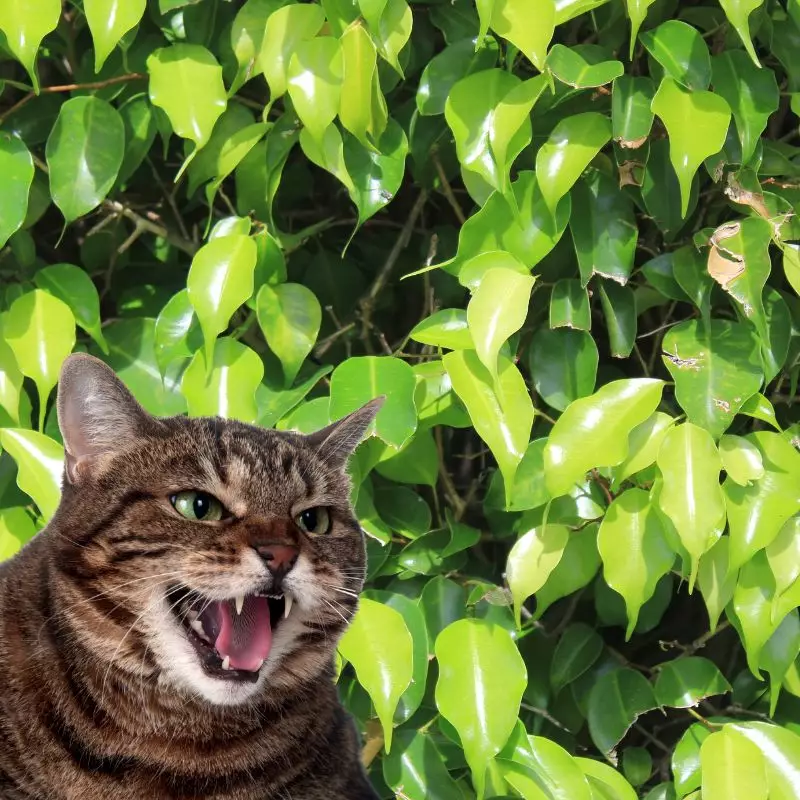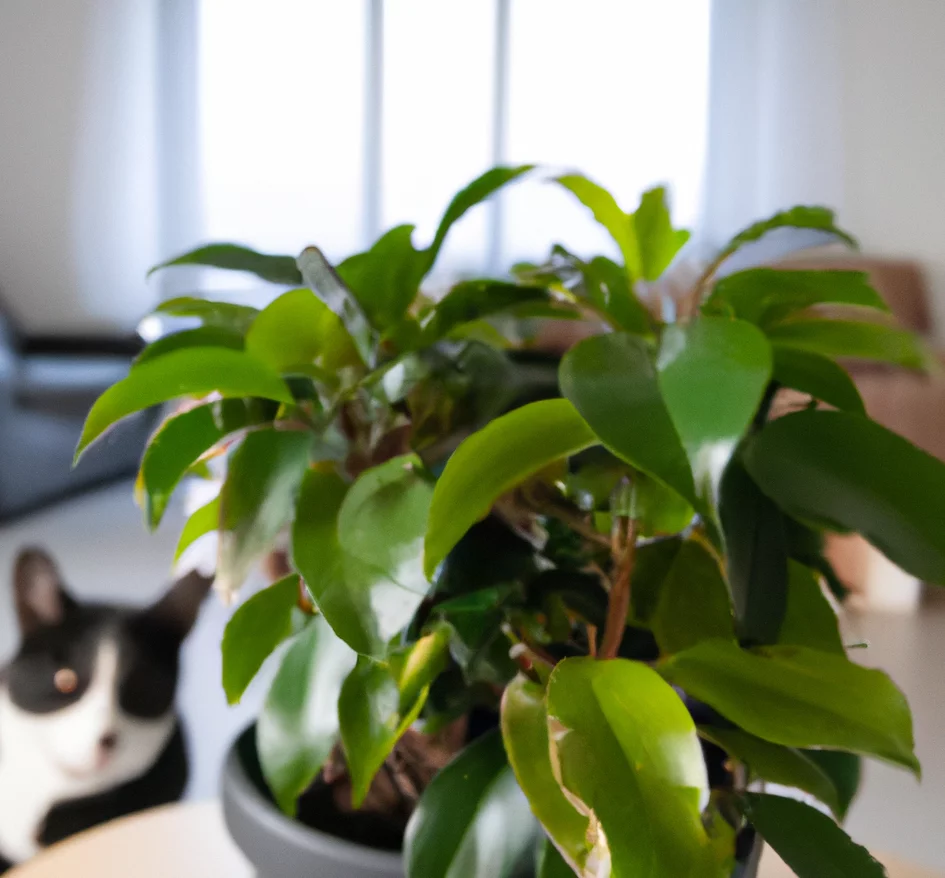The fig tree, commonly referred to as the Weeping Fig or Indian Rubber Plant, bears fruits that humans commonly consume without harm. However, for our feline friends, parts of the fig tree, especially its milky sap, can be harmful.
To ensure the accuracy and reliability of this article, we have collaborated with a team of experienced DVMs (doctors of veterinary medicine). Their insights, combined with our research from high-authority websites such as ASPCA and PetMD, have enabled us to provide a comprehensive overview of the potential risks associated with figs and their effects on cats.
It’s essential to understand that while not every cat will react adversely to figs, the plant does contain compounds like proteolytic enzyme and psoralen which can be detrimental to a cat’s health.
Clinical Signs of Fig Poisoning in Cats

If you suspect your cat has come into contact with or ingested parts of a fig plant, it’s crucial to understand the signs and underlying reasons for their reactions. Seeking early veterinary intervention can be vital for their well-being. Below are the common clinical signs of fig poisoning in cats, along with explanations of why each symptom might manifest:
- Vomiting: This is a common immediate response in many animals, including cats, when they ingest something toxic. It’s the body’s way of trying to expel the harmful substances. The compounds in figs, particularly proteolytic enzyme and psoralen, can irritate the feline gastrointestinal tract, leading to vomiting.
- Hypersalivation: The fig’s sap or its components might cause an immediate burning or tingling sensation in a cat’s mouth. This can result in excessive drooling or hypersalivation as the cat’s body attempts to soothe and wash away the irritant.
- Shaking of the head: If the sap or any part of the fig comes into contact with the cat’s face or mouth, the irritation might cause the cat to shake its head, trying to rid itself of the discomfort.
- Diarrhea: Just as the toxic compounds can upset the stomach and induce vomiting, they can also disrupt the regular function of the intestines, leading to diarrhea. It’s another way the body attempts to rid itself of toxins.
- Skin irritation: Contact with the milky sap from the fig plant can cause local skin reactions. The skin might become red, swollen, or itchy upon exposure.
- Dermatitis: Prolonged or significant exposure to the sap can lead to dermatitis, which is an inflammatory reaction of the skin. This can present as redness, bumps, blisters, or even ulcers, depending on the severity.
If your cat exhibits any of these signs after coming into contact with a fig plant, it’s imperative to consult with a veterinarian promptly for an accurate diagnosis and appropriate treatment.
First Aid and Treatment of Fig Poisoning in Cats

A specific fluid solution injected with a small proportion of hydrogen peroxide is usually administered to induce vomiting. Unless under the supervision of a veterinarian, you should never attempt to induce vomiting in your cat at home. If your cat is not thoroughly observed throughout the treatment, vomiting might result in potentially life-threatening side effects such as aspiration pneumonia.
The vet may also deliver activated charcoal through a tube placed into your cat’s mouth and then down their throat directly into their stomach, depending on the amount of fig your cat has eaten. Many poisons can be neutralized with activated charcoal, which absorbs dangerous compounds and neutralizes their effect, allowing them to pass through your cat’s digestive system safely.
Additional drugs and treatments may be required due to your cat’s condition. In some cases, administering specialized drugs to help regulate the cat’s cardiac rhythm and respiration may be necessary. During these procedures, your cat may need to be hospitalized, and he or she may need to stay for many nights or until his or her condition stabilizes.
Recovery from Fig Poisoning in Cats

The symptoms of fig poisoning are usually mild, and most cats recover completely. If your cat is vomiting or has diarrhea, it may take many days of special food and medication for his systems to heal enough and resume a regular diet.
Your cat will have the best chance of recovering from fig poisoning if you were able to seek prompt veterinary assistance as quickly as possible after exposure, as with all cases of poisoning.
Prevention of Fig Poisoning in Cats
It is not advisable to grow fig trees if you have cats at home. If you have fig fruits, be sure to put it somewhere out of your cat’s reach. If you are eating fig, do not leave it unattended to prevent your curious cats from nibbling on it.
Your cat may still be exposed to fig trees in your neighborhood, thus, it is recommended to keep your cats safe and secured indoors. Restrict your cat from wandering far from your house by utilizing cat cages and installing additional fences and safety nets.
If you love plants but have cats at home, check out these lists:





